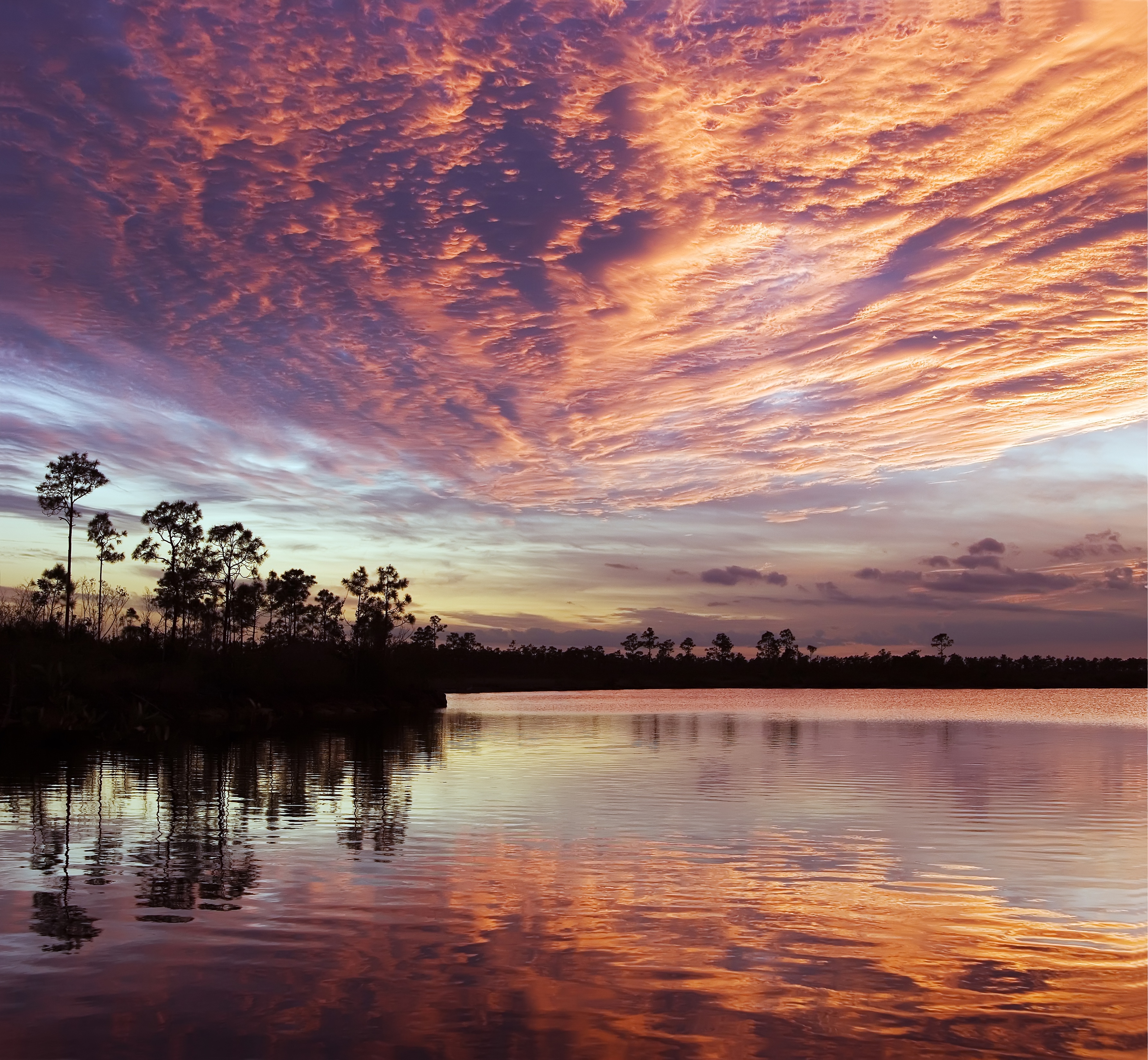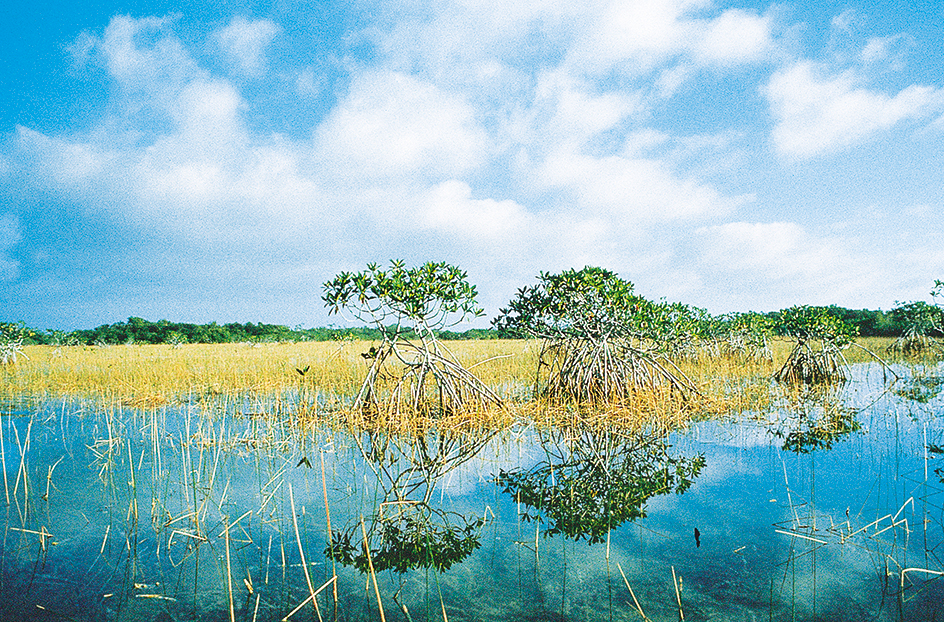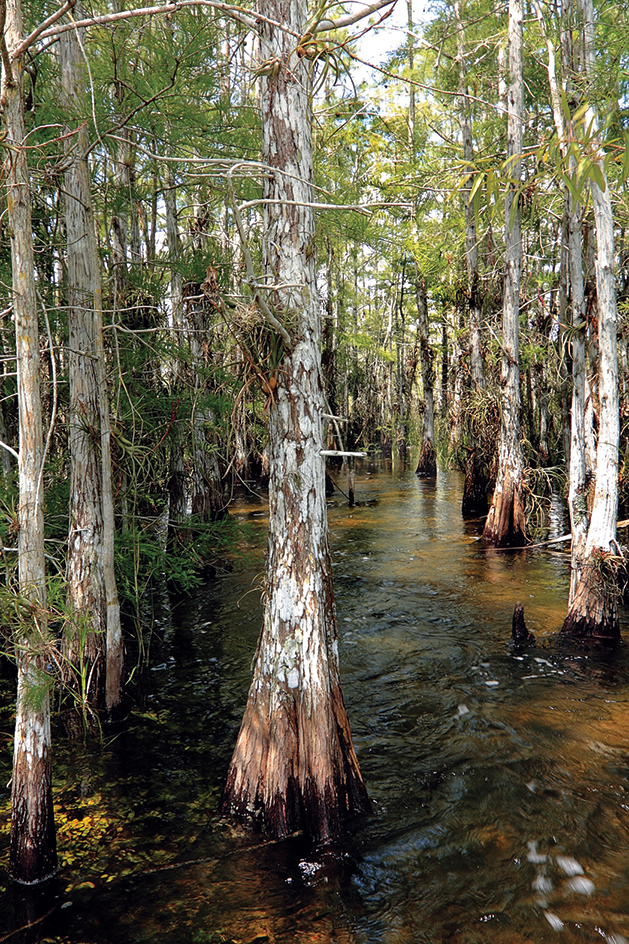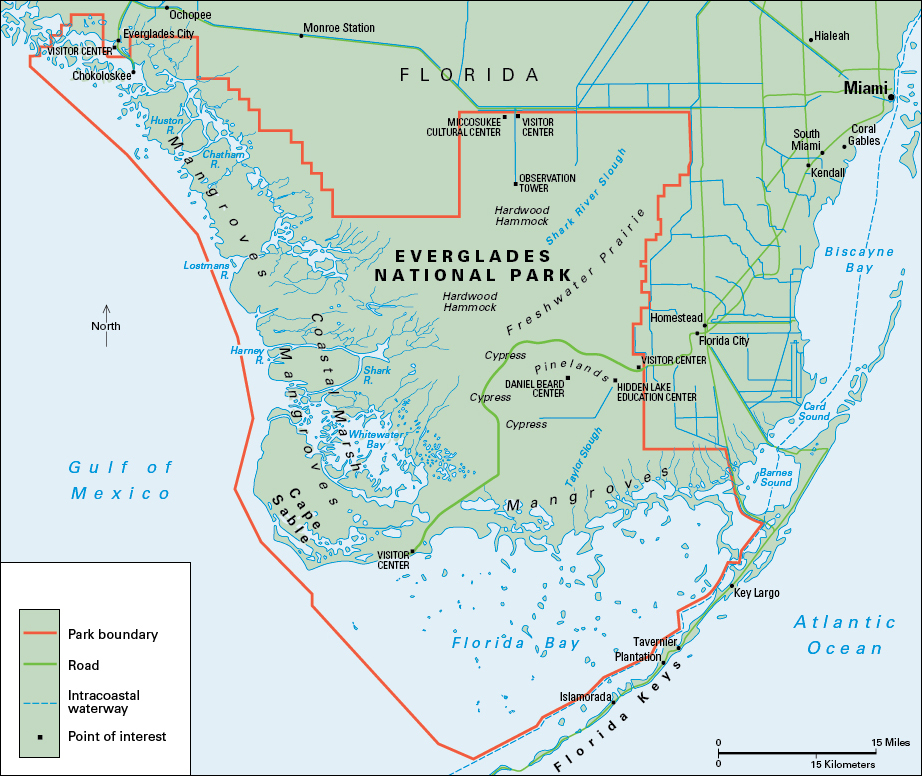Everglades, in southern Florida, are one of the most interesting and unusual wetland areas in the world. Everglades National Park, which makes up about one-fifth of the Everglades’ original area, covers about 1,500,000 acres (610,000 hectares). The Everglades extend from Lake Okeechobee to Florida Bay and the Gulf of Mexico.

The northern part of the Everglades consists of a prairie covered by shallow water and by saw grass, a grasslike plant with sharp, jagged edges that grows as high as 12 feet (3.7 meters) in some places. Bustic, gumbo limbo, live oak, mastic, and royal palm trees grow on mounds of higher land called tree islands. Near the southern coast, the Everglades become salt marshes and mangrove swamps, where the spreading roots of mangrove trees catch and hold soil. Many animals live in the Everglades. They include alligators, deer, fish, herons, pelicans, snakes, and the rare Florida panther.
Development of the Everglades.
The Everglades were created after the most recent ice age, which ended about 11,500 years ago. The ice melting from glaciers raised the level of the sea, which flooded the outlets of Everglades streams and turned the area into a wetland. Various peoples have lived in the area through the centuries. The Seminole Indians fled to the area in the early 1800’s during a period of wars against United States troops. 
In 1906, the state of Florida began draining parts of the Everglades to make the land suitable for farming. After World War I ended in 1918, farmers moved in and began growing vegetables and sugar cane. Canals were built southeast from Lake Okeechobee to supply drinking water to the growing communities in and around Miami. By the 1940’s, however, the United States government had decided to try to preserve a section of the Everglades. Thus, the southwestern region of the Everglades became the Everglades National Park in 1947.

Environmental problems.
In spite of the efforts to protect the Everglades, conditions within the wetlands worsened. The Kissimmee River is the main source of fresh water for Lake Okeechobee and the southern wetlands. In the 1960’s, the U.S. Army Corps of Engineers forced the waters of the winding Kissimmee into a straight, concrete canal. These measures sharply reduced the flow of water into the Everglades, with disastrous results for plants and wildlife. 
The massive development of southern Florida in the late 1900’s also damaged the Everglades’ water supply. Cities surrounding the Everglades use huge amounts of the water supply. The growth of agriculture in an area just south of Lake Okeechobee has also contributed to the water problem. Sugar plantations and vegetable farms consume much water, and harmful chemicals used in agriculture run off into the water supply.
Plant species that are not native to the Everglades also pose problems for the area. Seeds from plants, including paperbark trees and Brazilian pepper trees, have been dispersed to the Everglades by high winds. When such seeds take root and develop into plants, they can overpower and replace native Everglades species.
Saving the Everglades.
Many groups have joined the fight to save the Everglades. The state of Florida has bought land around Lake Okeechobee to create new marshes that will store water and filter out toxic chemicals before releasing the additional water into the wetlands to the south. The U.S. Army Corps of Engineers has restored many miles of the Kissimmee to its original course. In 2021, the Corps completed a project reconnecting the various parts of the Everglades that had been fragmented by the building of artificial barriers and drainage canals.

